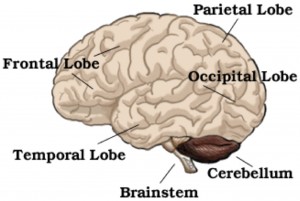Understanding Normal Brain Anatomy Key to Learning About Severe TBI
Understanding Brain Anatomy Important to Learn Neuropathology
Call me at 800-992-9447
You are in the ICU waiting room. The feeling of unreality that your loved one has suffered a severe brain injury hasn’t even started to wear off. Yet here are doctors and nurses cryptically explaining the nature of the medical crisis so that they can get your consent to provide necessary care to maintain life. That care may include brain surgery. While they use words about brain anatomy that they assume you must know – brain hemorrhage, lobes, intracranial pressure, ICP, hematoma, subdural – you can barely fathom that you are sitting there, more less follow what they are talking about. You get it. Your loved one might die if they don’t intervene. You do not need to be a doctor to say “yes.” But once the whirlwind of that permission is over, you are left to wait for news and try to sort out what it is they just told you was happening.
Michelle, whose step son suffered a severe brain injury explains:
As I explain to people in the support group I run: “How many times did you think of severe brain injury before you were struck with this injury? Not much, I’m sure.” And that was the thing. It was the unknown. What are we getting into? What is brain injury?
We had no idea and no one could (or would) tell you. There isn’t an article and nobody’s got a computer; you’re just sitting waiting. When you’re in that kind of unit, there was just death all around you. I mean, no one was surviving. So, you were holding on by a thread.
To view Michelle talking about the need for info on brain anatomy at the time of crisis click here.
 Key to understanding brain anatomy is to understand that these divisions are not like dividing a house into rooms. While there is a clear delineation between the two hemispheres, the lobes should be thought of more as regions of brain function, rather than specific compartments.
Key to understanding brain anatomy is to understand that these divisions are not like dividing a house into rooms. While there is a clear delineation between the two hemispheres, the lobes should be thought of more as regions of brain function, rather than specific compartments.








